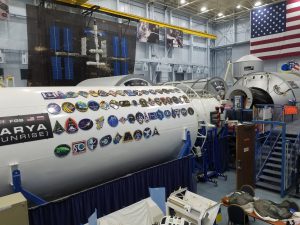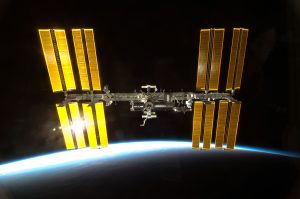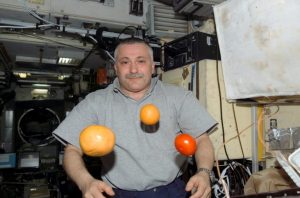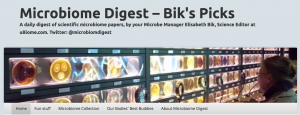(h/t to Mark Martin for posting about this on Twitter) A break from COVID-19… Microbes in Spaaaaaaaaaace. (it never gets old). This article entitled “Crewmember microbiome may influence microbial composition of ISS habitable surfaces” is a much needed addition to the literature on the ISS microbiome. Work from our lab an others has examined the …
This is a meeting report from the 2019 “3rd COSPAR Meeting to Address Planetary Protection Knowledge Gaps for Human Missions and Working Meeting on Microbial and Human Health Monitoring”. As much as NASA loves acronyms, I can see why no one liked the idea of the “COSPAR-MAPPKGHMWMMHHM 2019” name. Speaking of acronyms… COSPAR stand for …
Just posting some Tweets here … I really recommend people check out this paper. There is a new paper from @rblauste @ericamhartmann et al. that is a must read on microbes on the space station – see PR here https://t.co/Wi2vIUVTT5 from @NorthwesternU and paper here from @mSystemsJ https://t.co/cpD926urKD 1/n — Jonathan Eisen (@phylogenomics) January 9, …
Sometimes when a paper has many authors and drags on for years the resulting manuscript end up with a bit of a stitched together feel. And in this world of post-peer-review-by-socia-media it’s easy to hear about the flaws after the fact. Our recently published “A microbial survey of the International Space Station (ISS)” had some …
So a number of years ago our lab embarked on Project MERCCURI (let’s not talk about the tortured acronym). This complex and citizen science-based collaboration (website here) has been a fascinating journey. It’s ranged from getting to watch a rocket launch in Florida, to discovering/describing a new bacterial species, to our most recent publication… the …
Just a quick post here to say that Dr. Jenna Lang, formally of the Eisen lab at UC Davis, will be on Science Friday tomorrow, 12/8/17 talking about our work examining the microbiome of the International Space Station. She expects to be on at around 12:40pm PST. The publication is here, and we’ve compiled …
Microbes in space have been of interest to the folks at various space agencies for as long as we’ve been sending people into space. Rampant mold growth on the Russian Space Station Mir was probably one of the reasons for the decision to “deorbit” the station (a fancy way of describing crashing into the ocean). …
Microbes indoors DNA metabarcoding to assess indoor fungal communities: Electrostatic dust collectors and Illumina sequencing – Steffi Rocchi – Journal of Microbiological Methods ($39.95) Our study aimed to evaluate metabarcoding and bioinformatic analysis resulting from calibrated samples and samples collected by an electrostatic dust collector (EDC) in dwellings with no moisture problems. Thus, the fungal communities of …
The disease-causing organisms Burkholderia multivorans, B. cepacia, genomovars of the B. cepacia complex (BCC), as well as an unclassified species of Burkholderia, and its relatives Ralstonia pickettii and R. insidiosa account for 60% of the bacterial isolates obtained from the filtrated water system on board the International Space Station (ISS). Members of these genera can …
Microbes and buildings Bacterial Hygromorphs: Experiments into the integration of soft technologies into building skins – ACADIA 2016: Association for Computer Aided Design in Architecture – Carolina Ramirez-Figueroa – Newcastle University (OA) The last few years has seen an increase in the interest to bring living systems into the process of design. Work with living systems, nonetheless, presents …






